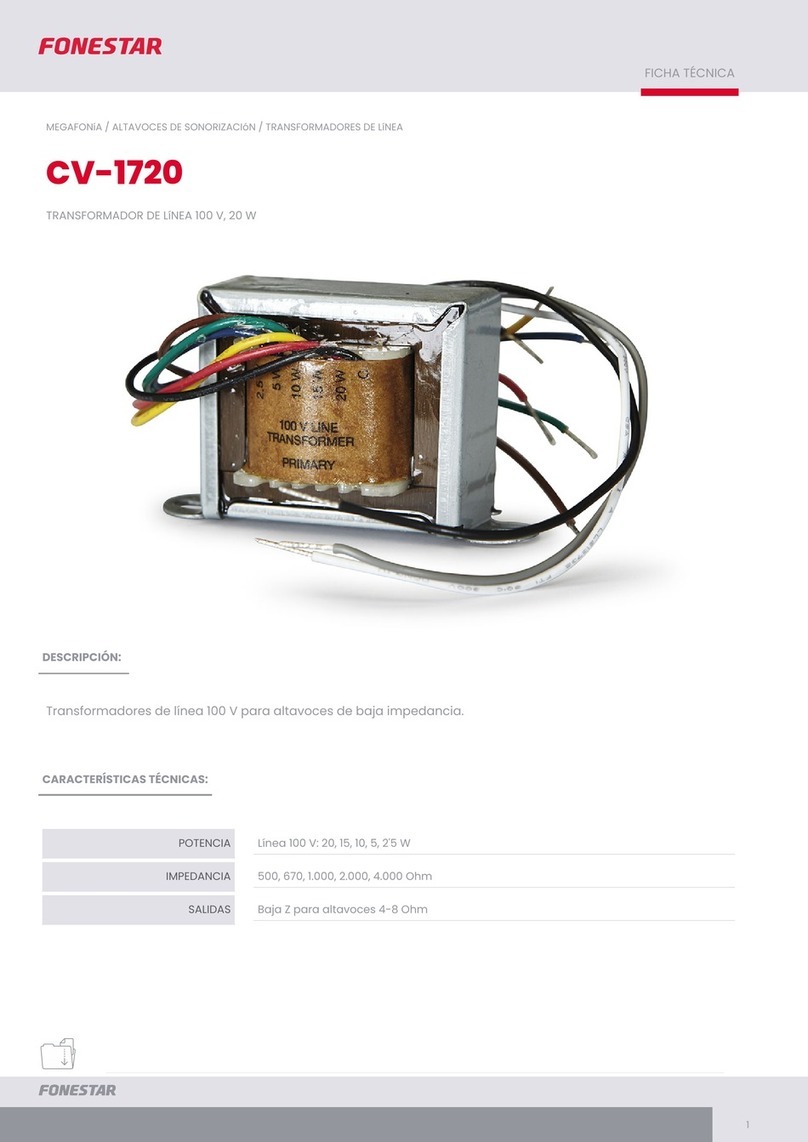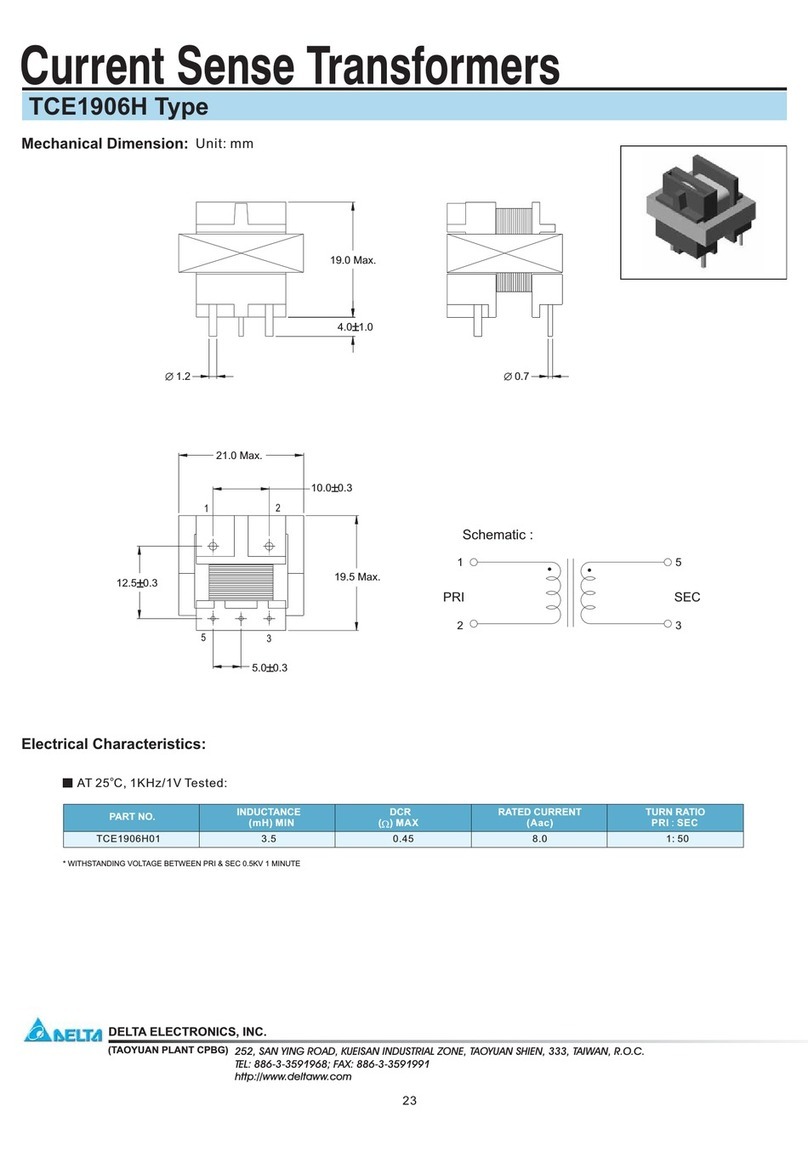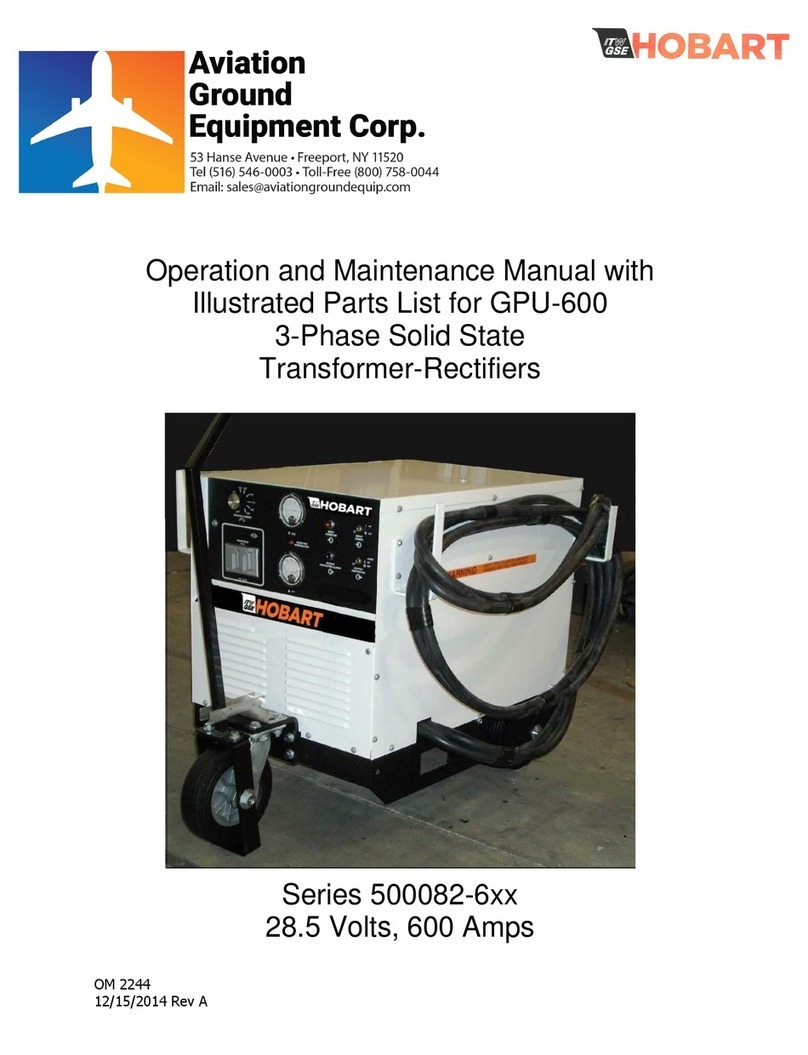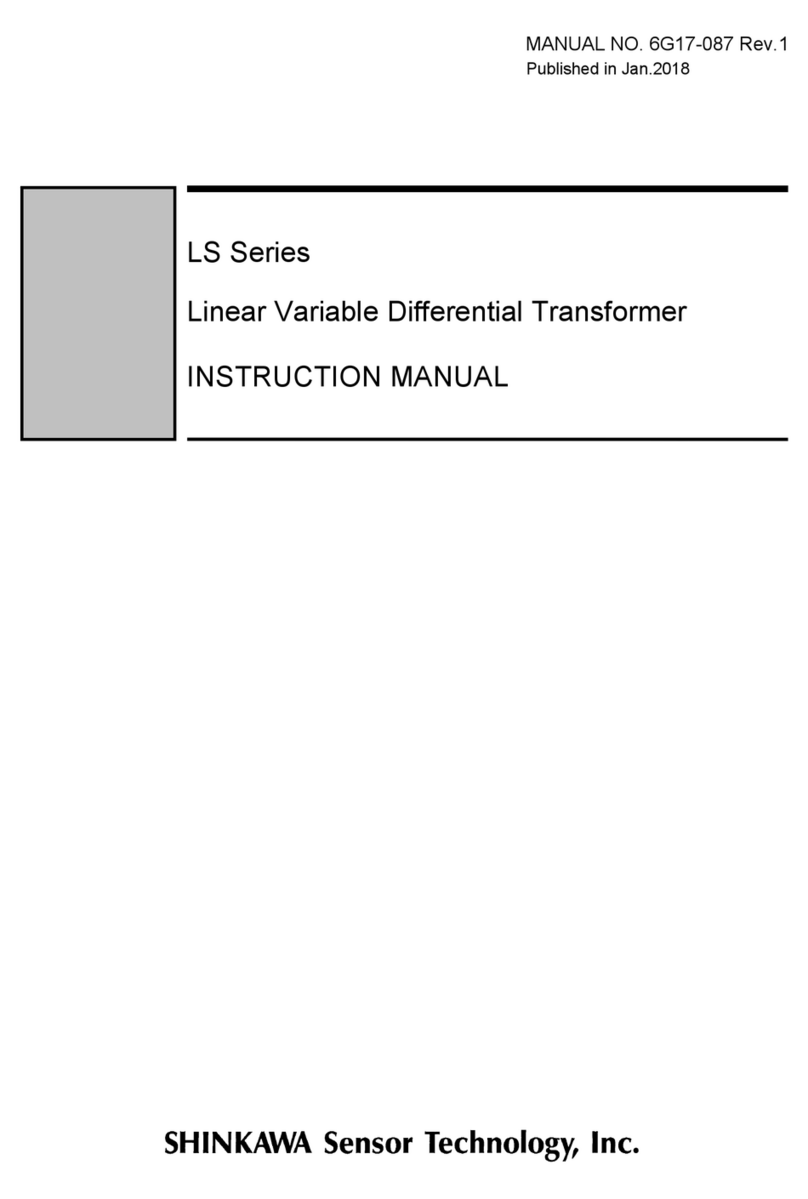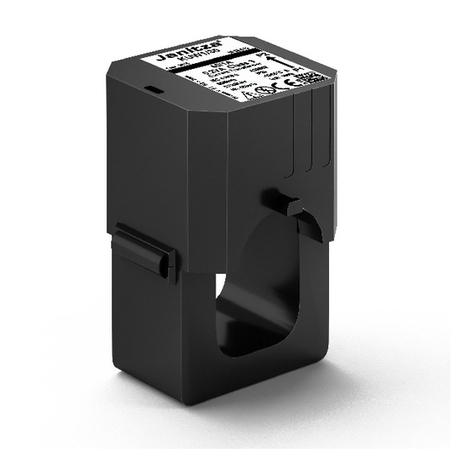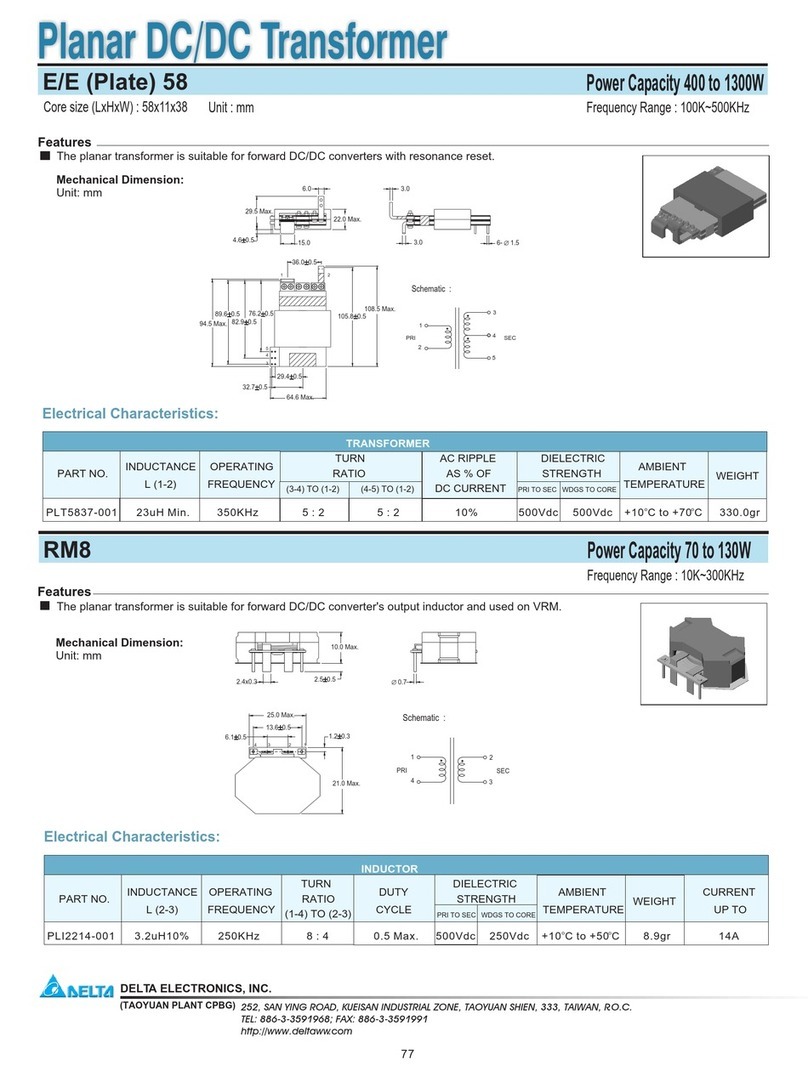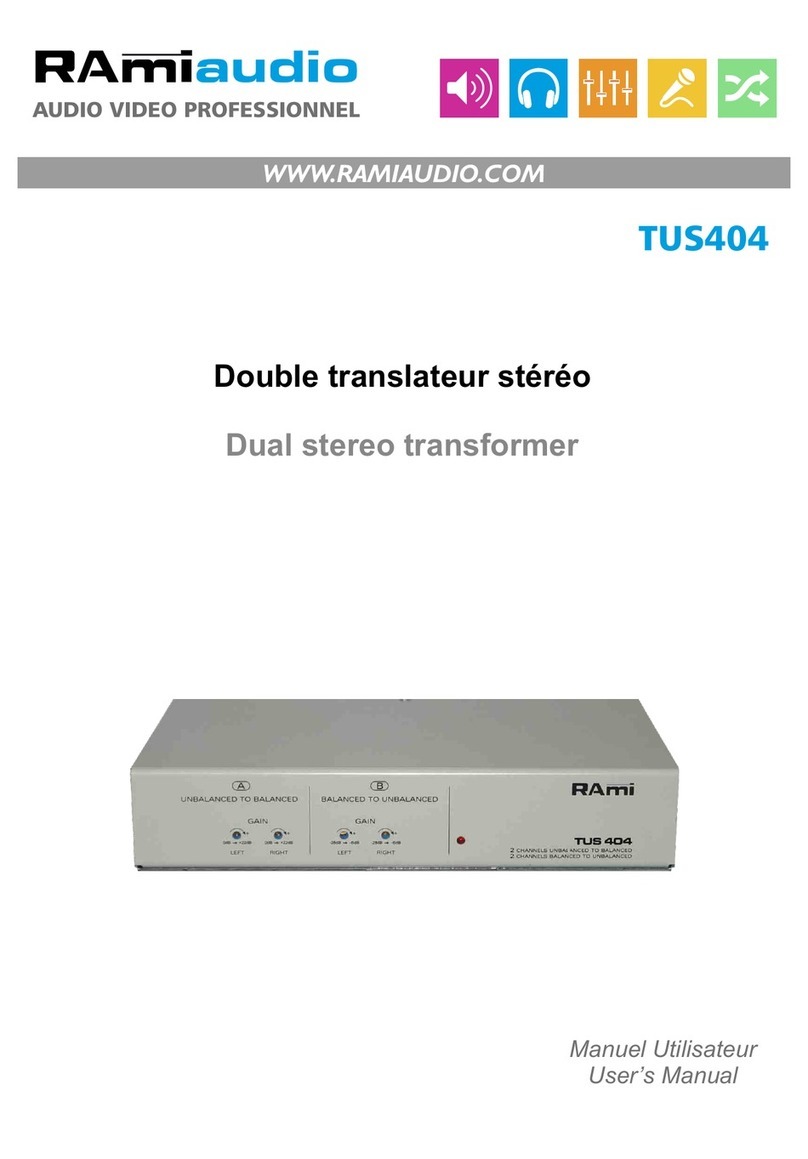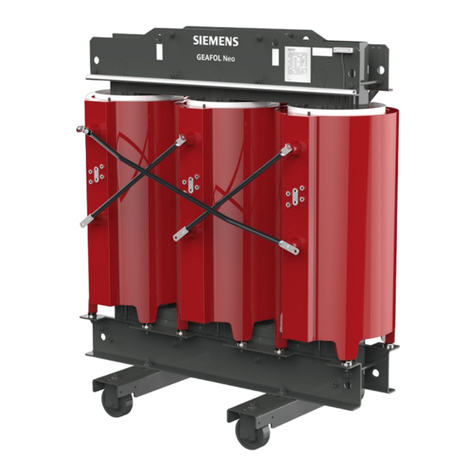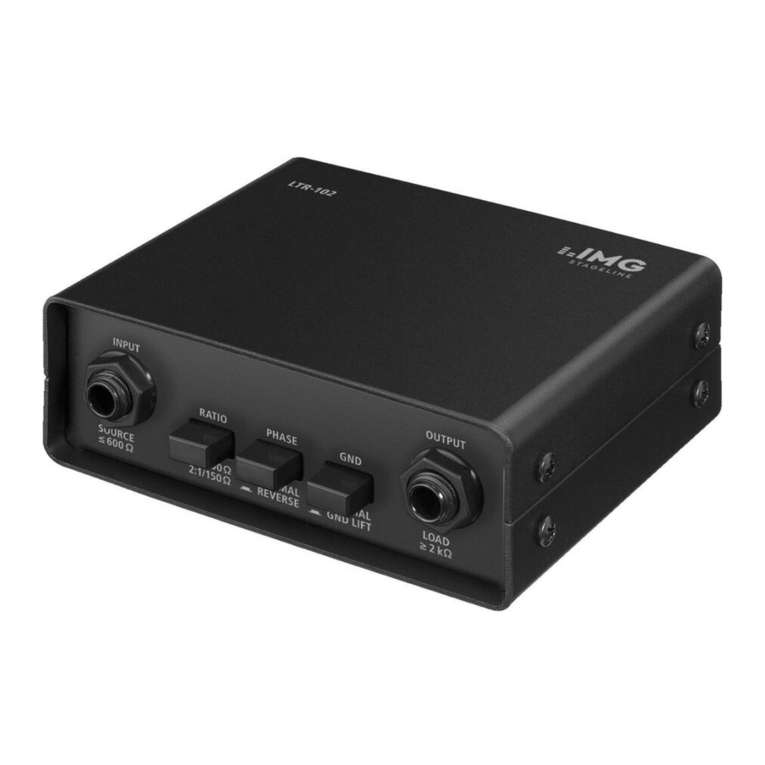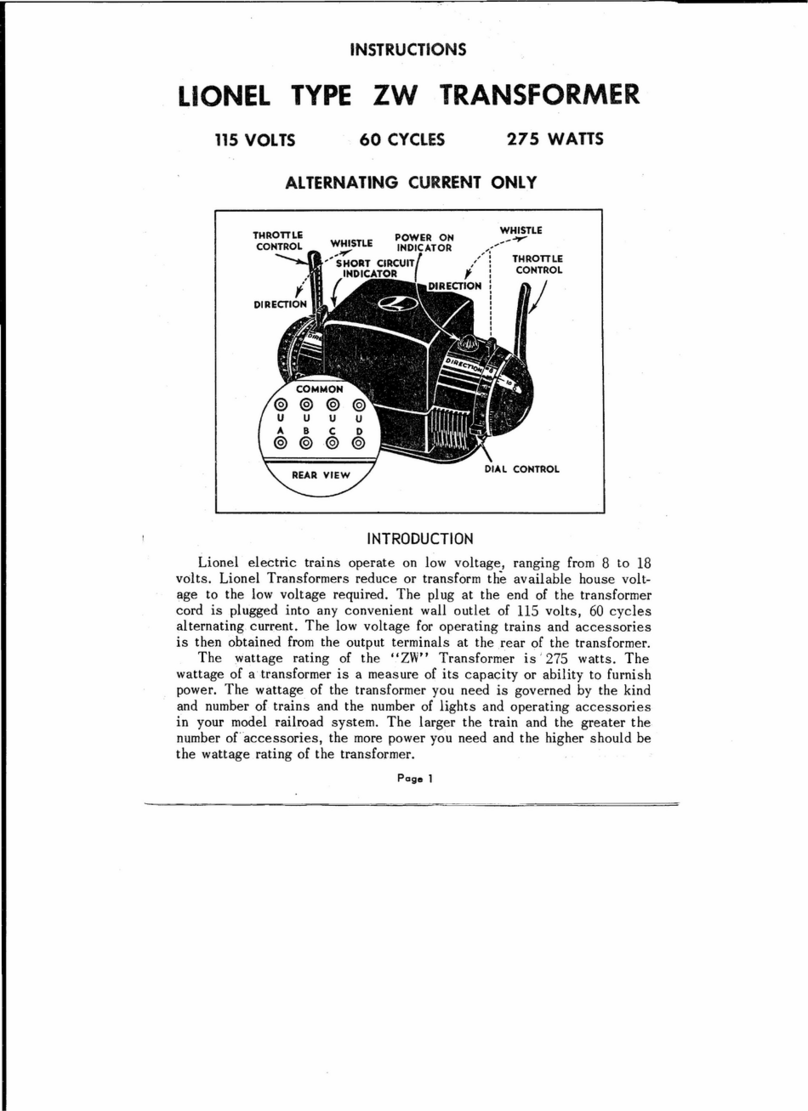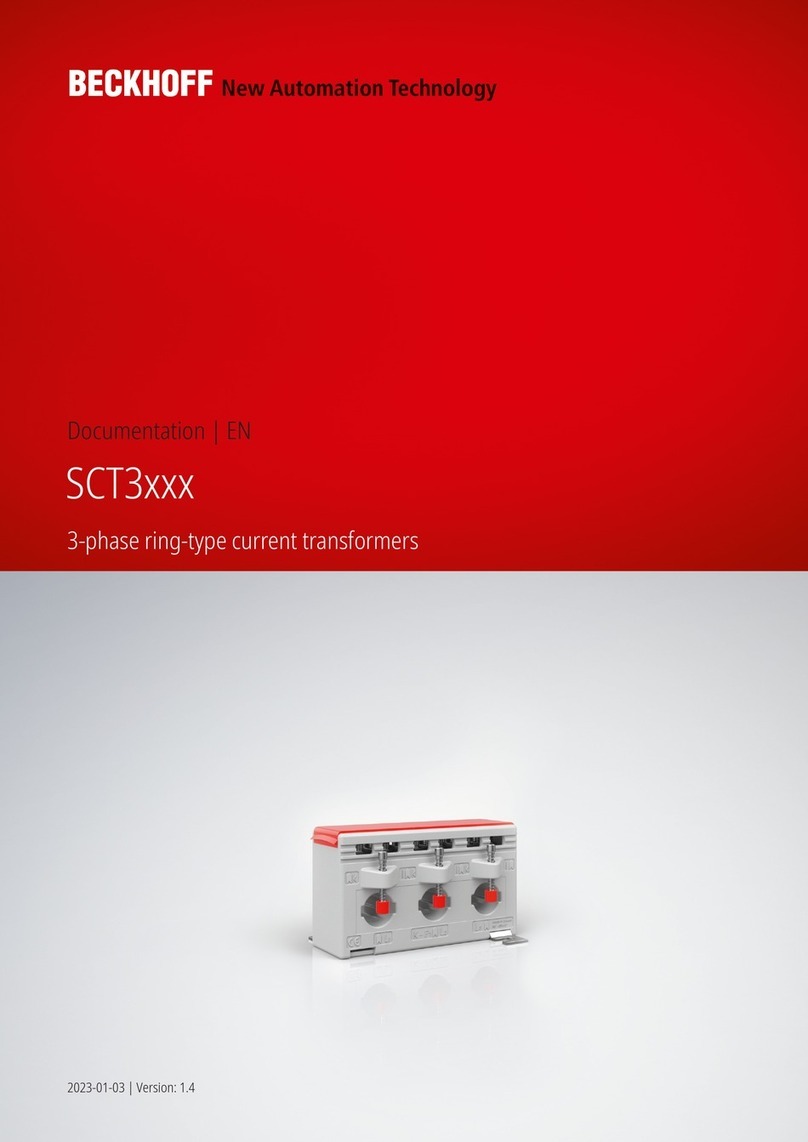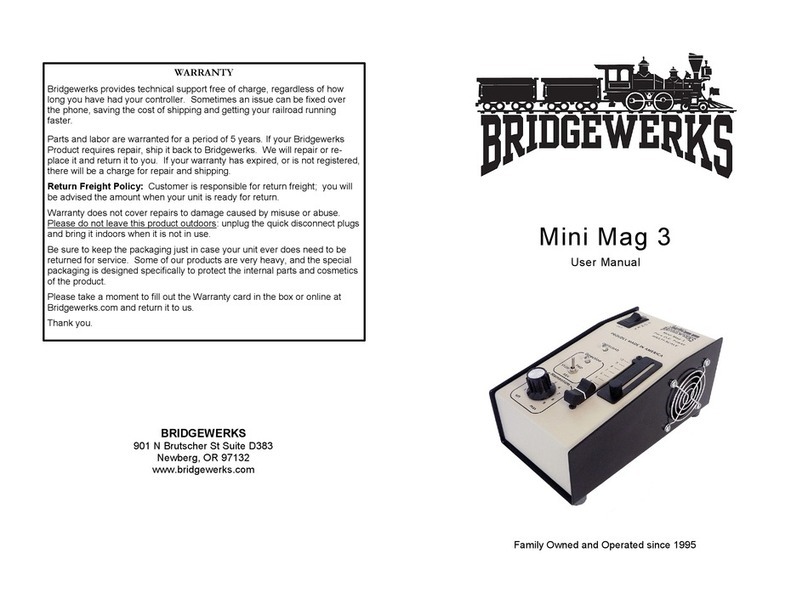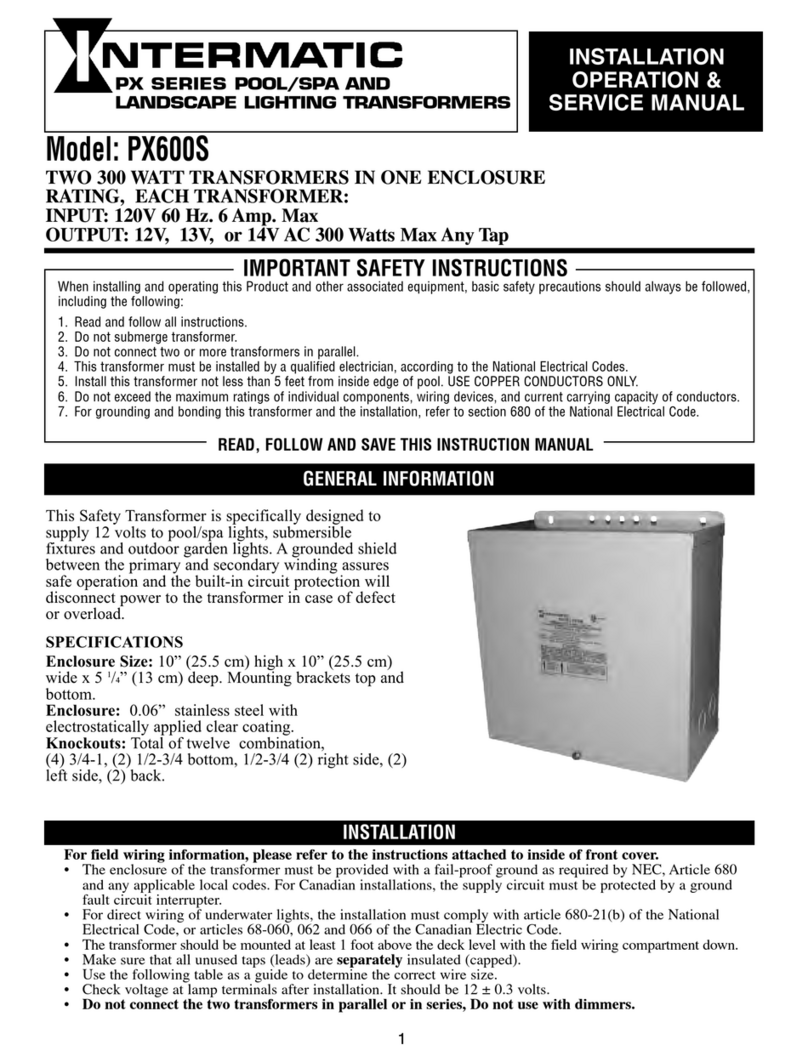Superior Electric • 28 Spring Lane • Suite 3 • Farmington, CT USA
www.superiorelectric.com
002105-079 REV G
instructions
for INSTALLATION OPERATION and MAINTENANCE
POWERSTAT®
VARIABLE TRANSFORMERS
WITH POWERKOTE®COILS
126-226 Series
The right to make engineering refinements on
all products is reserved. Dimensions and other
details are subject to change.
Important connection notes. Please read carefully.
·CONNECTIONS AND RATINGS given in these instructions are those most
commonly used. In addition, all ganged units may be connected so that
the units operate electrically independent on a common shaft. When this is
desired, connections and ratings for a single deck unit should be used.
·For ambient temperatures between -20°C and +50°C use current ratings
given in the charts. Figure A shows the output current de-rating required
above 50°C.
·Coil to terminal connections for all 126 and 226 Series units are shown in
Figures B, C, and D.
·The connection diagrams are labeled “L” for Line Connections, “B” for Boost
Connections and “S” for Step-Up Connections.
·The F226 Series POWERSTAT® Variable Transformers do not have
terminals 6 & 7 available and therefore do not have a Step-Up (“S”)
Connection. Terminal #3 is after the fuse on all F models.
·For the Step-Up Connections the tables show maximum output current rating
for output voltages up to 125% of the input voltage, and maximum KVA at
maximum output voltage. The output current must be reduced according to
the curve in Figure E for output voltages greater then 125% of input voltage.
Maximum KVA may be calculated using the rating curve in Figure E for
voltages less then maximum.
·Clockwise (CW) and counterclockwise (CCW) rotation connections shown
in the tables and diagrams are for motor driven units and units with the knob
on the radiator end. For connections with the knob on the base end, use
the shown CCW connection for CW operation, and shown CW connection
for CCW operation.
·Fuses are recommended on all units as shown (§) and are supplied on F
and 3PN models. Supplied fuses are 15 ampere on 126 types, and 8 ampere
on 226 types.
·COMMON shown in the connection diagrams is used as third leg in 3-
phase open delta, or neutral in single-phase 3-wire and 3-phase 4-wire wye
configurations. COMMON is not used in single-phase 2-wire or 3- phase
3-wire wye configurations. Jumper(s) provided in standard common position
should be moved or removed as required.
·Motor drive wiring is shown in Figure F.
·Cord-and-plug units (3PN type) are wired in the Boost (“B”) Connection
when shipped.
INSPECTION
A POWERSTAT Variable Transformer is a precision product packed with care.
When unpacking, examine carefully for any shipping damage. Inspect the brush
contact with particular care. The “Damage and Shortage” Instructions packed
with the unit outline the proper procedure to follow if any parts are damaged
or missing.
INSTALLATION
NOTE- The unit should be protected from any dust or debris that may be
encountered while drilling holes, installing wiring, etc., during installation.
MANUALLY OPERATED ASSEMBLIES
POWERSTAT Variable Transformer types 126 and 226 have two sets of
mounting holes to facilitate installation in new or existing layouts. Use the set
that is most convenient for the application. All models are designed so that
the same unit can be either bench or back-of-panel mounted as desired. The
units as shipped are arranged for bench mounting. To change to back-of-panel
mounting, proceed as outlined.
SINGLE UNITS
The 3PN model, has a cord and plug input and a receptacle output, and is
usually used as a portable source of variable a-c voltage. If desired they may
be mounted in the same manner as other manually operated single units.
BENCH OR WALL MOUNTING
1. Locate and drill for mounting bolt holes “A” using Drilling Template No. 1.
Three pilot holes in the base (identified as “B” on template) may also be
used if desired. These pilot holes are .157”/.167” in diameter by 13/32” deep
to accommodate #10 self-tapping screws. When these holes are used, it is
necessary to have access to the rear of the mounting surface.
2. Place the unit in position. Insert and tighten the mounting bolts. For mounting
holes “B”, the length of the bolts must not exceed the thickness of the
mounting surface plus 3/8”.
BACK-OF-PANEL MOUNTING
1. Using Drilling Template No. 1, locate and drill the four mounting bolt holes “A”,
the dial screw holes “C” and the center shaft hole. Maximum panel thickness
is 3 inches. The dial screw holes must be tapped to accommodate the 6-32
screws supplied. Three pilot holes in the base (holes “B” on template) may
also be used if desired. The holes are .157”/.167” in diameter by 13/32” deep
to accommodate #10 self-tapping screws. Flat head screws must be used,
since they will be partially covered by the dial.
2. Loosen the knob setscrews and remove the knob, Remove the dial and
mount it to the panel with the three 6-32 screws.
3. Loosen the shaft setscrews (at the base end of the shaft) and slide the shaft
through so it will project about 13/16” through the panel after installation.
Tighten the setscrews.
4. Place the unit in position, insert and tighten the mounting bolts. Be sure
that the mounting bolt length does not exceed the panel thickness plus 3/8”
when using holes “B”. Place the knob on the shaft and position the pointer
correctly with respect to the brush position and the dial indications. Tighten
the knob setscrews.
GANGED ASSEMBLIES
BENCH OR WALL MOUNTING
A. On Standoffs
1. Locate and drill the mounting bolt holes (four holes “A”) using Drilling
Template No. 1.
2. Place the unit in position. Insert and tighten the mounting bolts. When
access to the rear of the mounting panel is not possible, the unit may
be mounted to an adapter plate and the adapter plate mounted to the
panel using lag screws. Additional support in the form of a shelf or cradle
should be provided when wall mounting these units.
B. On Side Brackets
1. Locate and drill the four mounting bolt holes using Drilling Template
No. 2. BE SURE TO USE THE PROPER SET OF HOLES.
2. Insert and screw in part way the two top mounting bolts.
3. Place the unit in position and insert the two bottom bolts. Tighten all
bolts.
BACK-OF-PANEL MOUNTING
1. Locate and drill the four mounting bolt holes “A”, the three dial screw holes
“C” and the center shaft hole using Drilling Template No. 1. Maximum panel
thickness is 3”. The three dial screw holes must be tapped to accommodate
the 6-32 screws supplied.
2. Remove the knob and dial. Loosen the shaft setscrews (at the base end of
each unit) and slide the shaft through so it will project about 13/16” through
the panel after installation. Turn the radiators of the units to the extreme
counterclockwise position and tighten the shaft setscrews.
3. Mount the dial to the panel with the 6-32 screws supplied.
4. Place the unit in position. Insert and tighten four 1/4-28 mounting bolts.
Mounting bolts are supplied with the unit for use with panels to ¾” thick.
For thicker panels use 1/4-28 bolts 3/8” longer than the panel thickness. A
ganged assembly, because of its added length and weight, requires extra
support in the form of a shelf or cradle.
5. Place the knob on the shaft and position the pointer correctly with respect
to the brush position and the dial indications. Tighten the setscrews.
MOTOR-DRIVEN ASSEMBLIES
Motor-driven POWERSTAT Variable Transformers of the 126-226 Series, both
single units and ganged assemblies, may be bench or wall mounted in the same
manner as manually operated ganged assemblies. Three-gang assemblies,
however, have three side brackets requiring six bolts.
With ordinary care, a POWERSTAT Variable Transformer should require no
servicing except possible replacement of the brush assembly. The brush should
be inspected periodically and replaced if arcing takes place or if it is badly worn.
Because the brush must be of a special material, replace only with a Superior
Electric brush assembly listed below. The assembly is designed to assure perfect
contact of the brush to the commutator regardless of brush position and length of
time in use. Take care to avoid scraping, scratching or marring the commutator
surface. Follow these steps to install a new brush assembly:
1. Remove the plate block above the terminal panel.
2. Unfasten the brush assembly anchor screws, remove and discard the old
brush assembly.
3. Insert the new brush assembly in the radiator slot, replace the anchor screws
and tighten to the radiator. Be sure that the back end of the brush strap is
under the projections at the rear of the radiator brush slot.
4. Raise the brush and place a piece of sandpaper (grit #400 or finer) between
the commutator surface and the brush so that the smooth side is on the
commutator and the abrasive side is against the carbon brush.
5. While holding the sandpaper in place (flat), rotate the radiator through a short
arc. Remove the sandpaper and blow out the excess carbon particles.
Whenever unusual mechanical or electrical difficulties are encountered in
the operation or installation of your POWERSTAT Variable Transformer,
consult Superior Electric.
REPLACEMENT BRUSH ASSEMBLIES
MODEL NUMBER PART NUMBER DESCRIPTION
126 122819-001 RB126
226 122819-002 RB226
6. Rotate the radiator several times to check for smooth travel of the brush over
the commutator surface. The brush should fit flat over the entire commutator
surface. No space should be visible between the brush and the surface.
FIGURE
BRUSH ASSEMBLY
OPERATION AT TEMPERATURES ABOVE 50°C
FIGURE A
126 TYPES
FIGURE B
VIEWED FROM RADIATOR END
226 TYPES
FIGURE C
VIEWED FROM RADIATOR END
F126 AND
F226 TYPES
FIGURE D
VIEWED FROM RADIATOR END
OPERATION IN “STEP-UP” CONNECTION
FIGURE E
MOTOR DRIVE WIRING
FIGURE F

